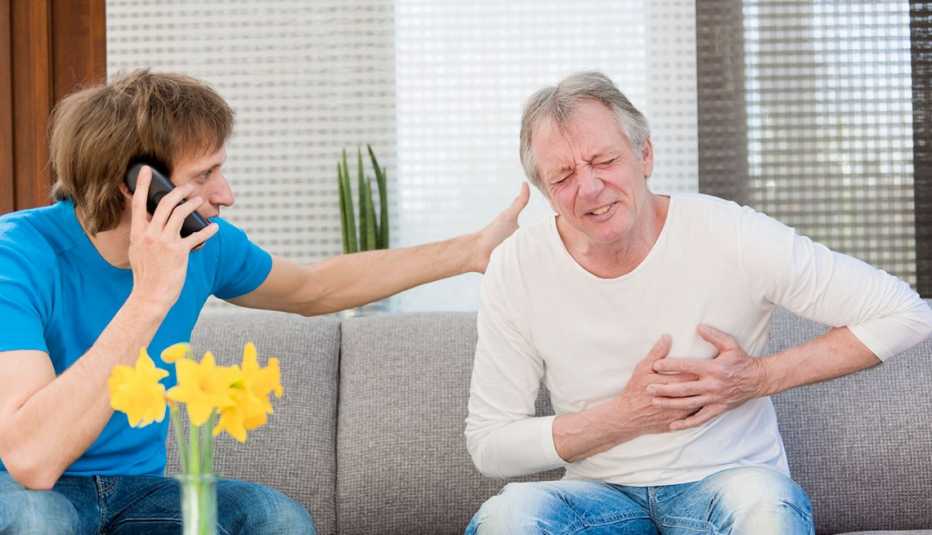Staying Fit
Every 34 seconds, someone in the U.S. has a heart attack. Every 60 seconds, someone dies of one. What sufferers do — or don't do — in the critical first moments can be the difference between life and death.


Over the past decade, hospitals across the country have shortened the time between arrival at the ER and treatment to an hour or less, contributing to a 38 percent decline in deaths from coronary artery disease.


AARP Membership— $12 for your first year when you sign up for Automatic Renewal
Get instant access to members-only products and hundreds of discounts, a free second membership, and a subscription to AARP the Magazine.
Now cardiologists are turning to the next big challenge: helping the nearly 40 percent of heart attack victims who never make it to the hospital. Many of them — 120,000 a year — will die, largely because they didn't seek help in time.
"It's a huge problem and a major unrealized opportunity," says Steven E. Nissen, M.D., chairman of cardiovascular medicine at the Cleveland Clinic. "People will still sit at home and take antacids because they think it's indigestion, or say, 'This can't happen to me because I'm a woman.' "
Here's what you can do to increase your odds of surviving a heart attack.
Step 1
Recognize the (less typical) symptoms
Men and women with a type of heart disease called atherosclerosis have a buildup of fat and cholesterol, or plaque, in the arteries. A heart attack occurs when a piece of that plaque breaks off and forms a clot that blocks blood flow to the heart muscle. The classic signs are chest pain; pain or discomfort in one or both arms, the back, the shoulders, the neck or the stomach (above the belly button — pain here is sometimes mistaken for indigestion); and shortness of breath. Sweating, nausea and vomiting are also common.
Yet studies find that as many as a third of heart attack patients have no chest pain. These patients are more likely to be older, female or diabetic. In fact, "the older you are, the more likely you are to have atypical symptoms," Nissen says. Research shows that as people age, they don't always experience chest or arm pain, sweating, nausea and vomiting. Instead, they're more apt to experience confusion and labored breathing, and to faint.
That's because as the coronary artery closes, the heart starts pumping less blood through the body. "With the stiffer blood vessels that older people typically have, they don't get enough blood flow to the brain, and pass out," Nissen says. "They wake up on the floor with vague chest pressure."
In general, symptoms may come on gradually, be hard to pin down, and stop and then start again. It's not uncommon to feel unwell days or weeks earlier. According to new data from Linköping University in Sweden, published in the Journal of Cardiovascular Nursing, people ages 32 to 74 who had had a heart attack were more likely to have visited the doctor in the week prior to the event than those who hadn't.
That's why Harlan M. Krumholz, M.D., a cardiologist and health care researcher at the Yale University School of Medicine, says to stay alert even when you're simply not feeling yourself: "If something feels really different from what you've experienced in the past, don't ignore it."




































































More on Health
Easy, Enjoyable Ways to Boost Heart Health and Lower Blood Pressure
How just stretching, taking baths or enjoying your coffee could lower your risk of heart attack and stroke